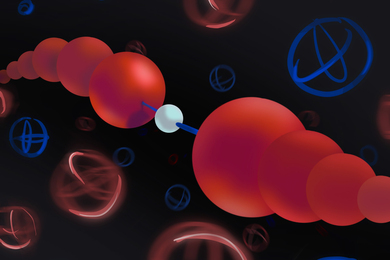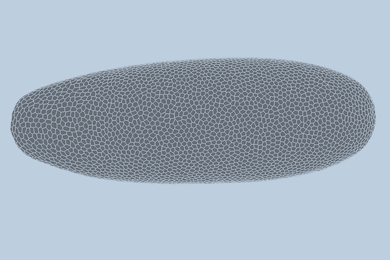A satellite that previously tracked incoming ballistic missiles is now using its MIT-built optical sensor to survey deep space. It has found or recovered more than 100 objects that were lost or getting lost, and has reduced the number of lost satellites in key orbits from 63 to 13.
This satellite's new mission comes at a crucial time. Some 650 active satellites are currently in orbit, and it is estimated that nearly 1,500 will be by 2010. Deep space surveillance contributes to the safe and effective placement of these satellites, which represent significant investments and growing revenues.
The Midcourse Space Experiment satellite previously used by the Ballistic Missile Defense Organization (BMDO) also monitors known space-based threats. More than 20 nations have, or soon will have, space-based intelligence and targeting capabilities.
On October 1, the Department of Defense (DOD) formally transferred the satellite from the BMDO to the US Air Force Space Command. This was made possible by the Advanced Concept Technology Demonstration Program (ACTD), which seeks to rapidly and inexpensively transition technology to US forces. This project, the Space-Based Space Surveillance Operations ACTD, is one of 68 ACTDs initiated by the DOD.
HIGH-ALTITUDE ORBITS
The decision to use the satellite as a space-based sensor grew out of a need to better track objects in high-altitude satellite orbits. Ground-based surveillance systems can adequately observe low orbits, but their ability to monitor deep space orbits is limited by location, weather and time of day.
The DOD initiated ACTD in 1995 to focus technology on war fighting needs. This particular project brought together the Air Force Space Command with scientists from the BMDO, MIT and Johns Hopkins University. It uses an experimental satellite built and operated by Johns Hopkins's Applied Physics Laboratory for the BMDO. On it is the Space-Based Visible Sensor, or telescope, built and operated by MIT's Lincoln Laboratory. The system was launched to track midcourse missiles in 1996.
"The contributions of this ACTD have had a profound impact on the space surveillance operations of the Air Force Space Command, not only on how they are conducting their mission today, but on how they envision conducting it in the future," said Curt von Braun, program manager for Lincoln Lab's Space-Based Visible Sensor. "It has been a remarkably successful effort, of which the Air Force, Johns Hopkins and MIT are very proud."
MORE THAN 1,000 VIEWS A DAY
Its military mission completed in 1998, the satellite and its sensor system&emdash;which includes a telescope, focal plane and data processor&emdash;were turned over to the Air Force Space Command for deep space surveillance. Each day, the Air Force Space Command electronically transmits tasks to Lincoln Lab, which schedules and translates them into technical instructions for the sensor. These are then relayed to the satellite by ground antenna by the Johns Hopkins Applied Physics Lab.
The satellite makes more than 1,000 observations a day. Coupled with ground-based surveillance systems, this enables the Air Force Space Command to locate objects in key deep space orbits every two and a half days, compared with five days when using only ground-based systems.
This space-based surveillance system was achieved at relatively low cost. Approximately $7.1 million was spent annually in 1998 and 1999 for the demonstration. During the final year, 2000, the demonstration team reduced costs by 21 percent, saving $2 million and making the program more affordable for subsequent operations.
The ACTD is funded by the US Department of Defense.
A version of this article appeared in MIT Tech Talk on November 8, 2000.





